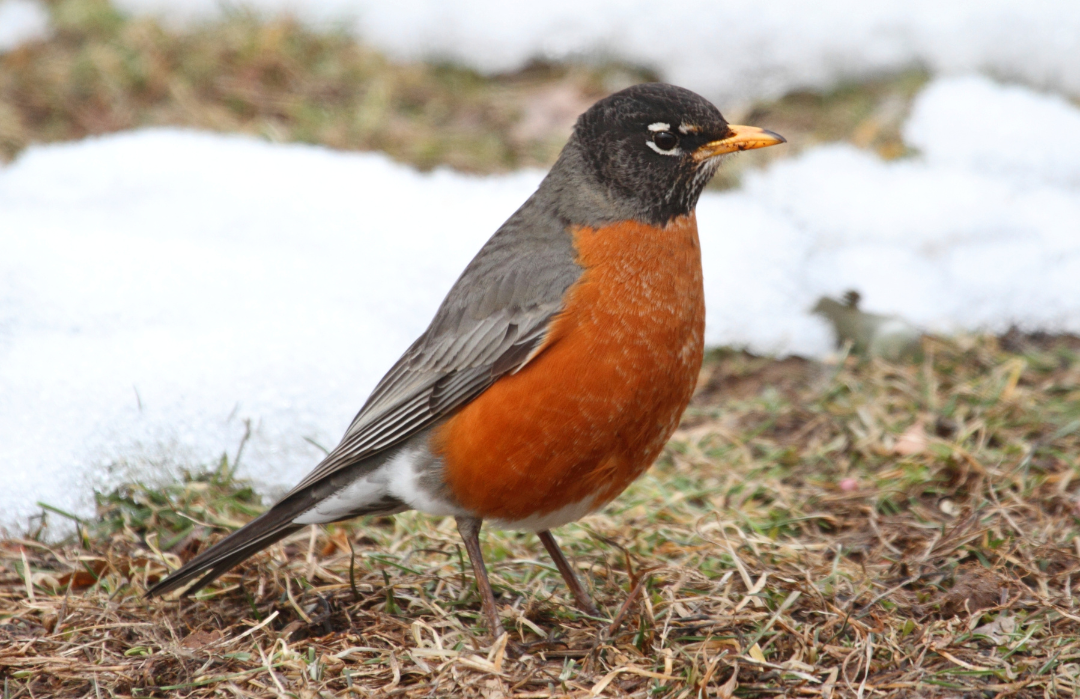After a long, cold winter, many of us are eager for any sign that Spring is on its way. By late Winter, people will start lookin for the first robin of Spring, that harbinger of blooming flowers and sunshine As the belief goes, robins are gone in the harsher months and come back only when the weather is getting nice again. But are robins really a sign of spring?
While some birdwatchers dismiss the idea as an old wives tale, others seem to think the concept is perfectly reasonable. In this Biologist Ruins Everything post, we’ll learn the science behind whether or not robins are truly a sign of spring.
The Wandering Thrush
As with any other nature or wildlife myth, it’s helpful to start with some biology. For starters, the bird we’re talking about is the American Robin, a common backyard bird throughout North America. If you’d like a detailed scoop on this fantastic bird, check out my Wildlife Spotlight post, Get to Know the American Robin.
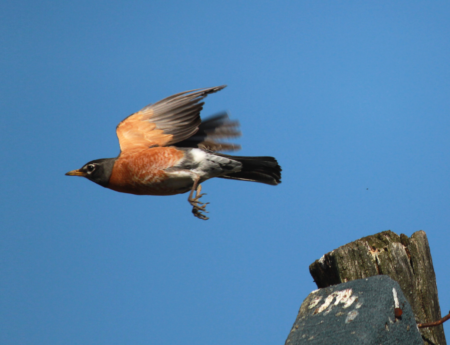
The robin’s latin name Turdus migratorius translates to “wandering thrush” or “migratory thrush”. You guessed it: like many other migratory birds, American robins pack up and head South many Northern areas when Winter sets in. Of course, this is one of many incredible strategies that wildlife use to survive the winter.
Robins from North America have been reported as far South as Guatemala, but most of them move more moderate distances. For example, bird banding studies report that individuals move only about 60 miles South of their breeding grounds. To get to the bottom of this whole “harbinger of Spring” reputation, it’s worth knowing why they migrate in the first place.
Why do robins fly South in Winter?
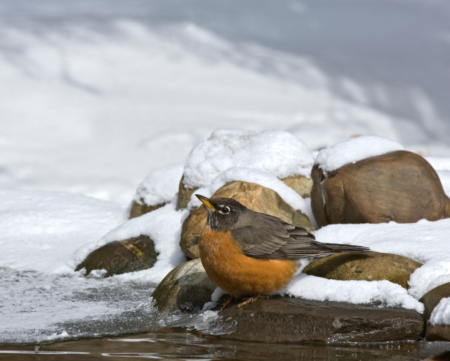
Contrary to popular belief, many bird species are hardy enough to handle the Winter chill. For robins and many other species, the actual issue is food. Bird feathers are incredibly effective insulation, and many songbirds have body temperatures as high as 107°F (42°C)! While that makes staying warm much easier than it does for us, it presents other problems.
Having enough food to fuel such a high metabolism, requires a lot of food. Songbirds aren’t exactly living the sloth life! As insects become less plentiful and snow and frozen ground makes it hard to find earthworms, robins run the risk of going hungry. Because of this, they’ll often relocate to places where they can find more food. Since food is the issue and not necessarily temperature, robins don’t have to move unless food is totally scarce.
This is an important difference! Robins are facultative migrants, meaning that they may migrate but it’s not absolutely necessary for their survival. By contrast, many other migratory birds in North America are obligate migrants, meaning they always need to migrate in order to survive.

Well, why wouldn’t robins want to migrate? Migration is actually a very dangerous time for birds. In some species, as few as 1/4 of young birds survive their first migration. It’s also very energy intensive. Migration also means risking too late an arrival in Spring, and having difficulty finding a nesting territory or mate. Thus, if robins can be lazy about migrating, you might expect them to do so.
Changing times
And that seems to be happening more and more often, according to ornithologists. Resighting studies on banded robins show an increasing number of them are hanging out close to their breeding sites during the Winter. Although milder winters thanks to Climate Change may play a role, there seems to be a another factor at play. Neighborhood habitats!
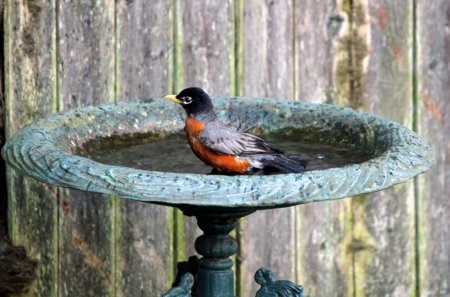
As populations grow and people develop landscapes to suit their needs, we convert outdoor places to parks, neighborhoods, city blocks, and so on. Since robins are very resourceful birds, this hasn’t been much of a problem for them. In fact, robins are familiar neighborhood birds exactly because they are well-adapted to living in urban and suburban settings. The increase in suburban areas, lawns, and gardens across the North American landscape, has made it easier for robins to tough out the winter without migrating.
However, another change has also made a huge difference: invasive species. While robins eat mostly insects during the Spring and Summer, they rely heavily on berries in the colder seasons. This diet flexibility allows robins to tough it out in colder areas when insects aren’t available.
During winter, berries can be as much as 90% of their diets! The spread of several invasive shrubs like buckthorns (Rhamnus cathartica) and honeysuckles (Lonicera sp.) has provided a lot of food for overwintering robins. To make things more complicated, robins have also helped spread these harmful invasives via seed dispersal in their droppings!
Seeing robins in Winter
All of this means that, yes, you may see robins in your yard, even during the dead of Winter. If you like that idea, definitely check out my Outdoor Tips post on designing your garden for wildlife.
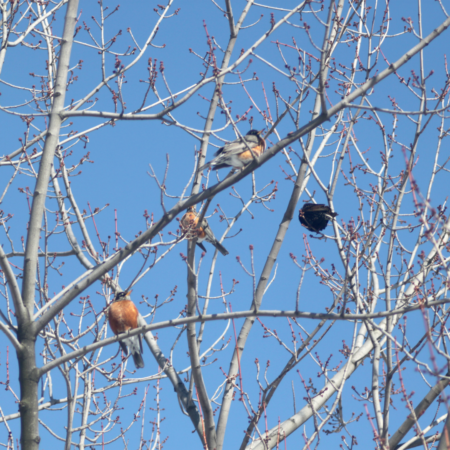
But does this mean that robins are not a sign of spring? Not necessarily! While you could definitely see robins year round, you are much more likely to see them during migration. Of course, this depends on where you are.
However, depending on where you live, you might see huge overwintering flocks of robins hanging out together. These are sticking together to find food and keep safe as they wait for the next breeding season. If you’re further North, migratory robins passing through may join your resident (lazier?) robins. This means you’ll see a lot more of them all at once during the Spring and Fall.
During early Spring in Boston, I remember that the parks would be absolutely filled with robins. After only seeing a handful during the Winter, this always caught me by surprise! Up in Massachusetts, that was definitely a sign of Spring. Here in Georgia, flocks of robins ready to head back North are gathering in parks and gardens as I write this post. Some of them are even starting to sing! While a lone individual robin is not a harbinger, these changes in behavior absolutely are.
So, are robins a sign of spring?
Yes and no! It may depend on your location, and how many you are seeing. While robins aren’t a sure-fire sign of Spring, they definitely can be in certain contexts. I think I’d call this myth semi-busted: spotting the “first robin” doesn’t mean Spring has arrived. However, robin sightings do increase as the weather warms up, and larger groups mean that migration may be underway.
Thanks for reading about whether robins are a sign of spring!
Have you had any good robin sightings that you’d like to share? Let us know in the comments! As always, feel free to send any questions or requests for new posts via the Contact page. We’d love to hear from you!

